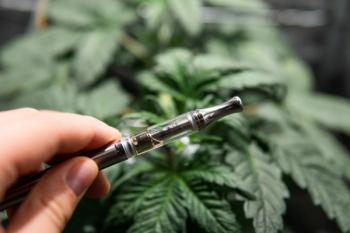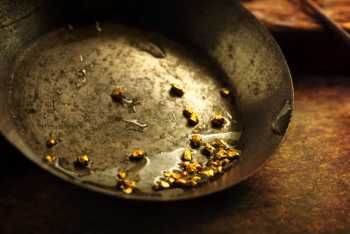
Cannabis Science and Technology
- March/April 2018
- Volume 1
- Issue 1
Goal-Oriented Extraction Processes
Many processes have been adopted for extraction and refinement of cannabis. Much like traditional botanical extractions, the aim of these techniques is to provide the desirable qualities of cannabis in a more readily usable form for the delivery method of choice. The wide range of options available has left processors questioning the best method for their extractions. A goal-oriented approach, focused on finding the best fit between process and physicochemical product attributes is critical. Pairing this goal-oriented process development with analytically guided optimization will allow for the development of an ideal process to deliver the best end product.
One of the key challenges when designing a cannabis processing plant is the overwhelming number of options available. Within a cannabis processing plant, decisions about unit operations will need to be made around preprocessing, extraction, and purification. Even after landing on an extraction process between light hydrocarbon, ethanol, solventless, or supercritical fluid options, there are myriad equipment vendors offering the latest and greatest technologies for each process. This plethora of possibilities leads to the unfortunate, but unavoidable question: What’s the best? While this question addresses some basic design options for the process, the far more critical question to ask is, what’s the best for my products?
Answering that question demands a holistic view of the process, and not simply siloed unit operations. This question drives us toward goal-oriented process development, which invariably results in higher efficiencies and higher end-product quality. Regardless of whether the end product is as basic as a simple extract, a high-end consumable, or a pharmaceutical-grade formulation, understanding the physicochemical attributes that drive that product’s quality will assist in making decisions about how to design a cannabis process. These attributes may be things like cannabinoid potency ranges, viscosity, color, clarity, or aroma. Each of these desired properties can be carefully crafted by choosing and arranging the optimal unit operations into a complete process.
While the common parlance in the industry has become “extraction lab,” when designing a cannabis process there are three key stages: preprocessing, extraction, and purification. Each of these stages is filled with options that will affect the properties of the resulting cannabis extract. Making decisions about those stages becomes much more straightforward when you are armed with the requirements of an end product.
Preprocessing
Preprocessing may begin as early as making decisions about how to dry and store cannabis raw material. If, for example, the end product requires fresh aroma notes like a live resin, then this unit operation may demand no drying and frozen storage. If, on the other hand, the goal is to deliver the traditional cured flavor of cannabis, then identifying the optimal temperature, humidity, and moisture content will drive the development of that process step. The key is identifying metrics by which to grade our process-in this case, perhaps moisture and terpene content-and having a way to measure it.
A recurring theme in process development is the criticality of analysis. Analytical methods provide the feedback required for design. In the above example, a drying process is proposed for delivering a targeted terpene profile. That process could then be carried out, and the resulting dry cannabis raw material could be analyzed via gas chromatography (GC) to determine if the targeted terpene profile was achieved. Because the target is rarely achieved on the first attempt, the drying process conditions (temperature, humidity) should be altered, the experiment repeated, and more terpene data collected. This iterative process design will result in an optimized approach while keeping the goals of the end product in mind, all because of the feedback provided by analysis.
Another important preprocessing step is raw material size reduction. This step is often skipped, but in many cases, it can enhance the efficiency and quality of a cannabis extraction process. The goal of this process step is to decrease the particle size of the material to be extracted, resulting in an increased surface area available for solvent extraction. Again, taking a holistic view, we might recognize that this would benefit solvent-based extraction processes such as those using butane, ethanol, or a supercritical fluid, but perhaps would be detrimental to some of the solventless extraction processes.
Next, we look to the goal of our process. Let’s assume we are interested in delivering the bioactive components of the cannabis raw material as close to their natural state as possible in our finished extract and optimizing the efficiency of our extraction process. We can then define metrics that tell us if we have accomplished those goals. For example, I may hypothesize that by creating a ground raw material with a consistent and small particle size I will increase the efficiency of my extraction. Again, we turn to our iterative process design mindset and test several size-reduction variables (that is, milling versus grinding, room temperature versus chilled, low-speed grinding versus high-speed grinding), and using an instrument such as a sieve shaker or particle size analyzer I can determine which process variable gives me the smallest and most consistent ground particle size. To achieve the goal of delivering “nature identical” bioactives, I can analyze for target compounds such as the cannabinoids and terpenes before and after the size reduction process to ensure that degradation resulting from thermal or oxidative damage is minimized.
Extraction
The heart of any cannabis processing plant is the extraction process. This unit operation will have a major impact on every physicochemical attribute of the cannabis extract being processed and will likely represent a significant portion of the capital outlay associated with a processing plant.
Light hydrocarbons, specifically butane and propane, have been used for cannabis extraction for some time (1). This solvent system provides fast extractions and is fairly selective for cannabinoids and terpenes, meaning it is possible to avoid coextracting other potentially unwanted compounds from the cannabis raw material. Light hydrocarbon extraction systems tend to be middle of the road in terms of capital cost, but depending on local safety requirements it may demand a serious infrastructure investment to create a safe working space.
From the lens of goal-oriented process development, light hydrocarbon extractions have two limitations. The first involves tunability. Compared to other extraction processes like supercritical fluid extraction, there are a smaller number of variables that can be adjusted when producing a light hydrocarbon extract, which means the processor has less impact on the properties of the extract produced. The upshot of this lack of tunability is an ease of use and shallower learning curve for operators. Secondly, while butane and propane are highly volatile compounds, a post-processing step, usually referred to as purging, is required to remove the solvent from the extract. This purge step is often carried out in vacuum ovens and involves heating the extract under deep vacuum conditions to drive off the remaining solvent. Through regulations, each state will dictate the degree to which these solvents must be removed. Colorado, for example, has just reduced its limit from <5000 ppm butane to <1000 ppm (2).
Again, analysis becomes a critical step for driving the development of an optimized process. If simple efficiency and throughput is the aim of our process optimization, it is critical to determine which vacuum pressure and temperature combination results in the fastest removal of butane from our extract to achieve a product that meets the regulatory specifications. To determine this, a residual solvent analysis (RSA) must be performed on samples from the purge process to determine how much butane remains at various times under a given set of purging conditions. If, for example, the RSA result on a sample comes back above the regulatory specification, the process developer knows they must either increase the purge time, increase the temperature of the purge, or pull a deeper vacuum.
It is quite unlikely, though, that the only goal of this process is efficiency. Delivering a high level of terpenes is critical both to the bioactive and organoleptic properties of the extract. This challenge adds a new layer of complexity because the methods for improving purge efficiency (increased time and temperature) will also result in greater loss of terpenes. In this case, it is critical to analyze both the residual solvent content and the terpene content throughout the purge process. An example of the type of data that could be generated for this process development is shown in Figure 1. (See upper right for Figure 1, click to enlarge.) During a purge process at a given temperature and pressure, samples can be pulled and analyzed for terpene and residual solvent content. This step not only gives the process developer a sense of how long it will take to produce material within specification, but also the expected loss of terpenes. Similar charts would then be produced at different temperatures and pressures until the developer finds a set of conditions that meets their goal of minimizing purge time and terpene loss.
Ethanol extraction has become increasingly popular because of its fast extraction, low capital costs, and clear designation as a food-grade solvent. Ethanol is a less selective solvent than butane and propane, but depending on the goals of the extraction this characteristic could be either a positive or negative attribute. If the goal is to strip a wide range of compounds from the cannabis raw material beyond just cannabinoids and terpenes, ethanol will certainly accomplish that. Because of this, it is not uncommon for ethanol extraction to be coupled with post-extraction purification processes to remove some unwanted coextractives. Just like with light hydrocarbon extraction, solvent removal becomes the most time-consuming step in the process. For ethanol extracts, it is more common for rotary or falling film evaporation to be used because ethanol requires significantly more energy to evaporate compared to butane. This means that the vast majority of volatile aroma compounds will be stripped from the extract during solvent removal. If those compounds are not important to the end product, then this potential problem is a non-issue, but if your formulation is meant to leverage the entourage effect of cannabinoids and terpenes acting synergistically to drive a condition specific effect, then this approach may not be the ideal process.
Supercritical fluid carbon dioxide (CO2) extraction has risen to a place of prominence in the cannabis industry. Its steep learning curve and high capital spend mean it is not the ideal choice for some, but the depth of tunability afforded by its solvent system gives the processor a level of control on the extract produced that no other process can provide. This tunability is due to a unique property of CO2 in the supercritical phase. By altering the pressure and temperature conditions of the extraction, the operator can alter the solvent characteristics of the CO2 (4). What this means is that the process developer can design an extraction process to select only the compounds that meet the goals of their end product.
Additionally, CO2 requires no further work for solvent removal because it simply evaporates from the extract as it is collected from the extractor. This means that after a method is developed for the extraction of cannabis with supercritical fluid CO2, there is no additional solvent removal process where volatile compounds can be lost. This gives the operator the ability to capture truly nature identical aroma profiles from their raw material. Figure 2 illustrates this point by displaying two chromatograms back to back. (See upper right for Figure 2, click to enlarge.) The top chromatogram represents the terpene profile of a cannabis raw material before extraction, while the bottom chromatogram (intentionally flipped for ease of viewing) represents an 18-fold dilution of the terpene extract produced by supercritical fluid CO2 extraction. Although only a few of the notable compounds are labeled specifically, the comprehensive mirroring of the two spectra clearly shows how powerful this extraction technology is at producing truly nature identical extracts.
Purification
Post-extraction purification can range from simple filtration, often referred to as winterization, to more complex processes, such as distillation or preparative-scale chromatography. Again, the requirements of the end product should drive decisions here. Winterization leverages melting point differences between the various components in an extract to precipitate out unwanted waxes at a reduced temperature. It is then possible to filter away those waxes while retaining most of the other compounds in the extract. This means that while winterization can reduce the overall viscosity of the extract and increase the cannabinoid potency, it will have little effect on the overall color and clarity of the finished extract. If, for example, the end product can use oil of any color or clarity, but the formulation can’t handle some of the plant waxes that may have been coextracted by an ethanol solvent, then winterization may be a perfect choice.
Distillation can purify an extract by selective evaporation. By evaporating, condensing, and collecting the various fractions of an extract that evaporate at different temperatures, an operator can pull a highly pure cannabinoid fraction, often referred to as distillate. This distillate will be very high in cannabinoid potency, will be light in color, and will have high clarity, but it will not retain many of the other compounds from the raw material. In fact, because of the high temperatures required for the distillation of cannabinoids, many bioactives in the extract can be degraded in the process. Therefore, if a product demands a fuller spectrum of cannabis bioactives, distillation may not be the ideal technology, but if a high clarity, high cannabinoid potency extract is the goal, it may be a good choice.
Lastly, preparative-scale chromatography can purify the compounds in an extract based on their affinity to the stationary phase within a chromatography column. This process will provide the highest levels of purity for individual cannabinoids (upwards of 95% pure), but will separate out the vast majority of other compounds. This purification process produces an extract that allows a product developer to formulate with highly pure cannabinoids, but it will not deliver the complete efficacy of the raw material.
Conclusion
This small snapshot of the options available shows just how complex the task of process development can be in the cannabis industry. The keys to effective process development are having a complete understanding of the physicochemical attributes the end product demands, and relying on analysis to provide feedback when optimizing processes. By keeping these considerations in mind as guidelines, finding the answer to “what’s the best for my product?” can be a straightforward, though still laborious process.
Christian Sweeney is the Director of Science & Technology at Cannabistry Labs in Denver, Colorado. Direct correspondence to:
References:
- J.C. Raber et al., The Journal of Toxicological Sciences40(6), 797-803 (2015), doi:10.2131/jts.40.797.
- Colorado Department of Revenue, Marijuana Enforcement Division, “Recently Adopted Retail Marijuana Permanent Rules - Effective January 1, 2018.” https://www.colorado.gov/pacific/enforcement/med-rules, p. 123.
- C. Sweeney, “Cannabis Extraction and Refinement in Colorado: A 5,280 Ft. View” presented at the Cannabis Science Conference, Portland, Oregon, 2017.
- M. Mukhopadhyay, Natural Extracts Using Supercritical Carbon Dioxide (CRC Press, Boca Raton, Florida, 2015).
How to Cite This Article
C. Sweeney, Cannabis Science and Technology1(1), 54-57 (2018).
Articles in this issue
over 7 years ago
The Evolution of Cannabis Quality Control Testingalmost 8 years ago
Empowering the Cannabis Consumer in a Rapidly Expanding Global Marketalmost 8 years ago
The New Frontier in Analytical Science: Cannabisalmost 8 years ago
Cannabis Science: Taming the Wild Westalmost 8 years ago
Can Analytical Testing Quality Be Assured in the Cannabis Industry?almost 8 years ago
Choosing Analytical Tools to Assess Complex Cannabis-Infused MatricesNewsletter
Unlock the latest breakthroughs in cannabis science—subscribe now to get expert insights, research, and industry updates delivered to your inbox.



